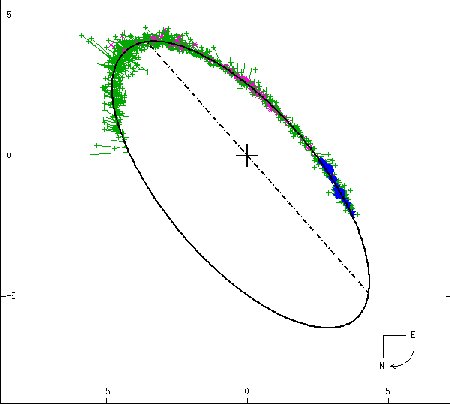
 |
Castor B goes around Castor A (the brighter and more massive of the two, placed at the cross) with an orbital period of 445 years at an average separation of 100 Astronomical Units. In reality, both go around each other. North is down, and the scale around the edges is in seconds of arc. The dot-dash line is the orbit's major axis. The orbital plane is tilted to the line of sight by 25 degrees, so that Castor A does not appear at the focus of the orbit (where it actually is). The period is so long that we have yet to see the stars make a full turn around each other. Each of the two is again double. Castor C lies 1.2 minutes of arc away. (From W. I. Hartkopf and B. D. Mason, Sixth Catalog of Orbits of Visual Binary Stars, U. S, Naval Observatory.) |